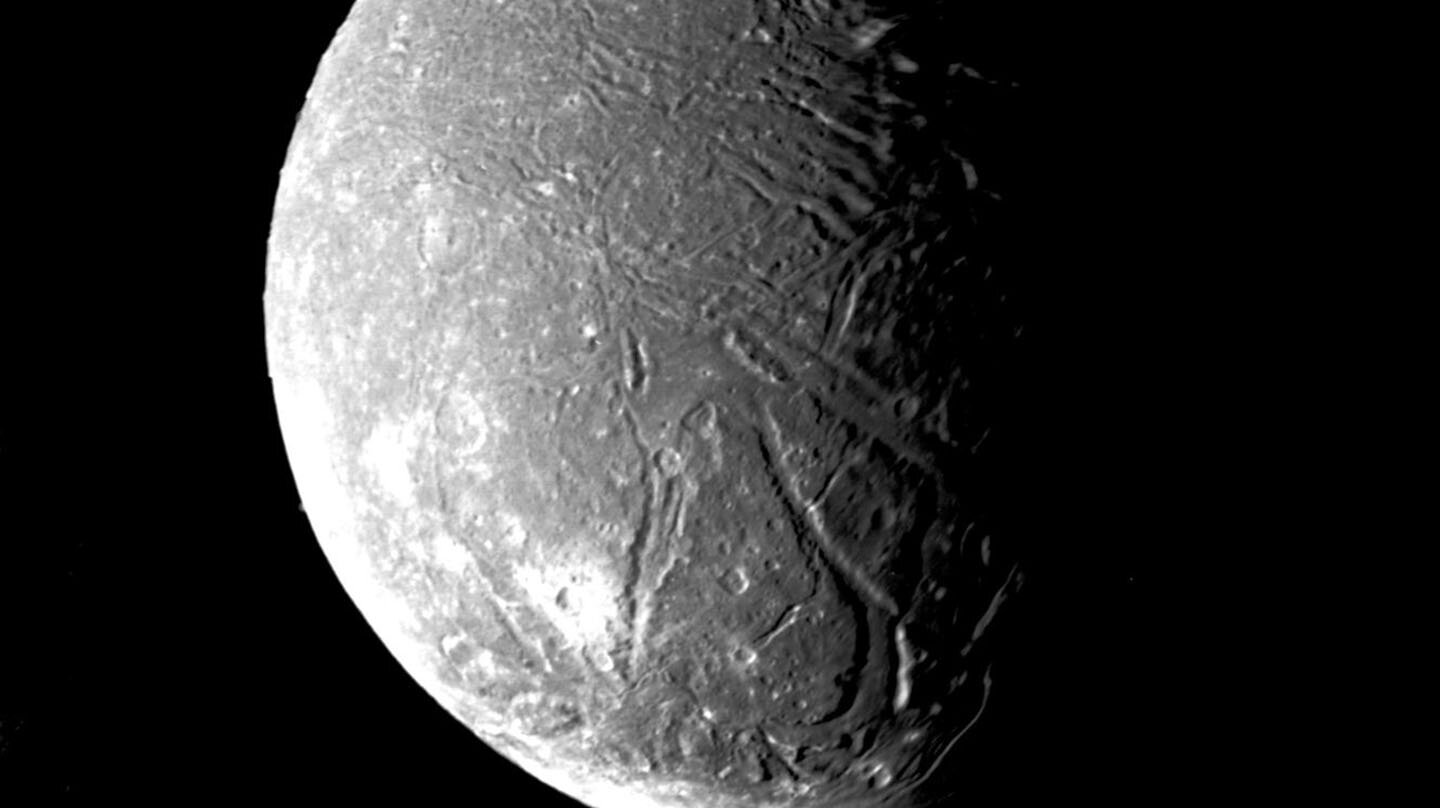Scientists have examined the frozen carbon oxides covering Uranus’ icy moon Ariel. Presumably, they may come from the ocean hiding beneath its surface. However, there are still many questions about this version.

Mystery of the carbon dioxide ice on Ariel’s surface
The surface of Uranus‘ moon Ariel is covered with significant amounts of carbon dioxide ice, especially on its “back hemisphere”, which is always turned away from the direction of the moon’s orbital motion. This fact is surprising because even in the coldest parts of the Uranus system, and it is 20 times farther from the Sun than Earth, carbon dioxide is easily converted to gas and lost to space.
Scientists hypothesize that there is some source from where carbon dioxide keeps hitting Ariel’s surface. Some believe it is formed by interactions between the moon’s surface and charged particles in Uranus’ magnetosphere during the process of radiolysis, when molecules are split by ionizing radiation.
But a new study published July 24 in The Astrophysical Journal Letters tilts the scales in favor of an alternative theory: carbon dioxide and other molecules come from inside Ariel, perhaps even from a subsurface liquid ocean.
Using NASA’s James Webb Space Telescope to collect chemical spectra of the moon and then comparing them to spectra of simulated chemical mixtures in the lab, a research team led by Richard Cartwright of the Johns Hopkins Applied Physics Laboratory (APL) in Laurel, Maryland, has some of the richest deposits of carbon dioxide in the Solar System, making up a layer about 10 mm thick.
Among these sediments was another mysterious find: the first distinct signals of carbon monoxide.
Radiolysis and magnetic field of Uranus
According to Cartwright, radiolysis may still be responsible for some of this replenishment. Laboratory experiments have shown that radiation bombardment of water ice mixed with carbon-rich material can produce both carbon dioxide and carbon monoxide. Thus, radiolysis may be a source of resupply and explain the large amounts of both molecules on the “ trailing hemisphere” of Ariel.
But many questions remain about the magnetosphere of Uranus and the extent of its interaction with the planet’s moons. Back when Voyager-2 flew past Uranus nearly 40 years ago, scientists suspected that such an interaction might be limited because Uranus’ magnetic field axis and the orbital plane of its moons were offset from each other by about 58 degrees. Recent models have confirmed this prediction.
The majority of carbon oxides may come from chemical processes that occurred (or are still occurring) in the watery ocean beneath Ariel’s icy surface, penetrating either through cracks in the Moon’s ice sheet or perhaps even through eruptive plumes. Moreover, new spectral observations hint that the moon’s surface may also contain carbonate minerals — salts that can only form through the interaction of liquid water with rocks.
Evidence for the existence of a subsurface ocean
Ariel’s surface is covered with funnel-like canyons, crisscrossing grooves, and smooth spots that are believed to have been formed by cryovolcanic spills, so researchers have already suspected that the moon was, or may still be, active.
A 2023 study led by APL’s Ian Cohen even suggested that Ariel and/or its moon Miranda could eject material into Uranus’ magnetosphere, including possibly through plumes.
“All these new insights underscore how compelling the Uranian system is,” Cohen said. “Whether it’s to unlock the keys to how the solar system formed, better understand the planet’s complex magnetosphere or determine whether these moons are potential ocean worlds, many of us in the planetary science community are really looking forward to a future mission to explore Uranus.”
In 2023, the planetary science and astrobiology community prioritized the first dedicated mission to Uranus as part of the Planetary Science and Astrobiology Decadal Survey, giving hope that a scientific journey to the turquoise ice giant is on the horizon.
According to phys.org


